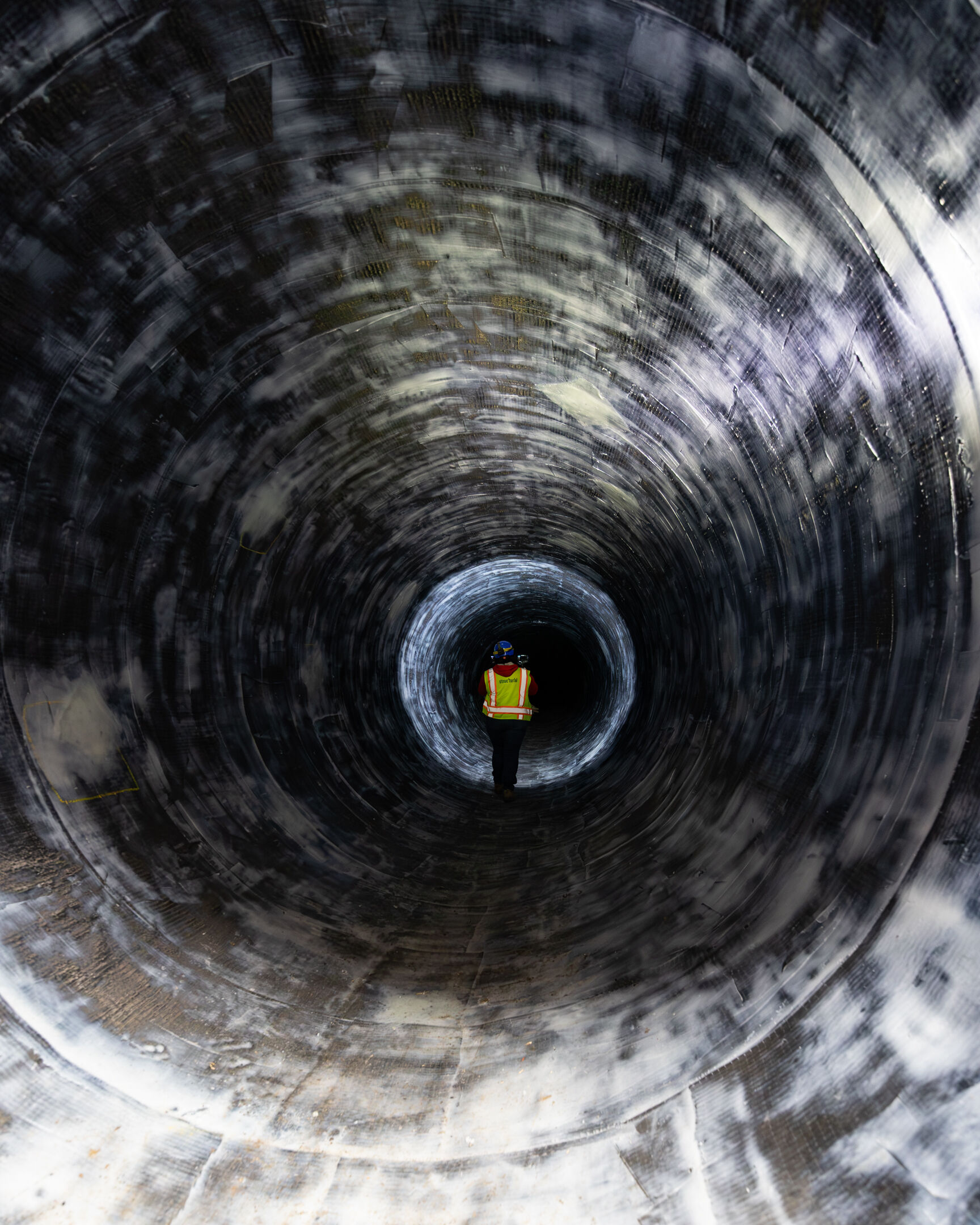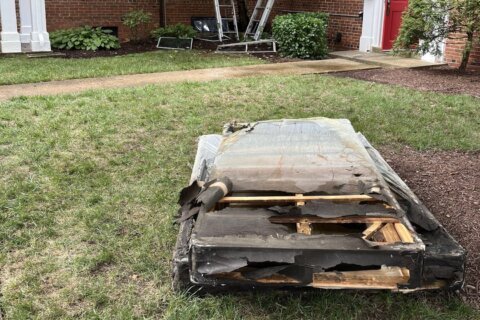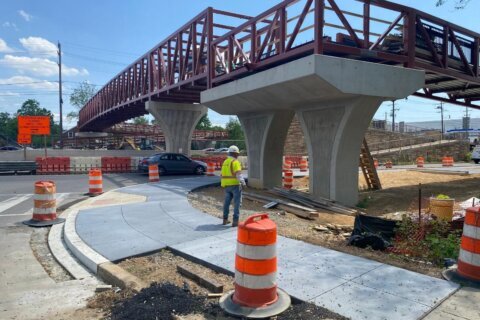Since the mid-19th century, an engineering marvel in Maryland has carried water 10 miles beneath MacArthur Boulevard, from the Potomac River to the Dalecarlia Reservoir. Now, the Washington Aqueduct, also known as the “Old Conduit,” is undergoing a $21 million repair job.
The brick, stone and mortar conduit was built in the 1850s by the U.S. Army so that people in the nation’s capital could have clean drinking water. Now, the Washington Aqueduct, with an additional conduit added in the 1920s, provides water for more than 1 million people in D.C. and parts of Fairfax and Arlington counties in Virginia.
“It’s actually an astounding piece of construction … most of the mileage of the pipe is still the original construction, and is still in very good repair. It’s only in certain locations where it’s experiencing distress,” said Robin White, construction branch chief for the Washington Aqueduct. “It’s a 9-foot diameter conduit. So if you can imagine that general floor to ceiling height in a residential house is 9 feet … it’s quite a big pipe.”

“One of the big challenges for this particular construction was that the pipe had to cross the Rock Creek area. And so in order for the pipe to cross, they built what’s now known as Cabin John Bridge. At the time it was called the Union Arch Bridge. And for many decades, that bridge was a record holding bridge for a masonry arch structure and is still in use for that purpose today,” White said.
One lane of traffic on MacArthur Boulevard travels on top of the brick aqueduct.
While the cavernous conduit or pipe has survived the test of time, it’s apparently no match for the heavy traffic atop it.
“This pipe is experiencing some structural distress in several spots throughout its length, primarily due to overweight vehicles traveling on MacArthur Boulevard … there is a strict weight limit for vehicles on the roadway, which not everyone adheres to … the pipe travels along MacArthur Boulevard under its centerline and it’s, in some places, only 12 inches under the roadway,” said White.
In modern construction, to handle heavier loads, masonry or concrete are reinforced with steel.
“It being unreinforced is both a bad and a good thing … the No. 1 thing that corrodes in modern structures is the steel reinforcement. So we don’t have corrosion issues, because we don’t have reinforcement. And it will actually last longer, it will last for a very long time, provided that it’s not loaded improperly,” White said.
The river intakes for the Washington Aqueduct are located at Great Falls, and gravity alone moves the water down the “Old Conduit” to the Dalecarlia Reservoir. While the intakes are closed for the yearlong repairs, water is currently being pumped up hill from Little Falls to the Dalecarlia Reservoir, requiring electrically powered pumps.
“During normal operations, it does not cost any money to send the water from the river to the reservoir, it flows naturally down the slope by gravity. When we have to pump around, that costs an extreme amount of money, because of the electricity required to run the pumps,” White said. “On average, it’s $10,000 per day.”
The electrical costs for the pumps alone will cost nearly $4 million of the $21 million project.
The “Old Conduit” is being repaired with Shotcrete — concrete in liquid form pumped through a hose and sprayed in thin layers onto the inside of the conduit.
Most of the river water pumped into the Dalecarlia Reservoir from the Washington Aqueduct flows across the street into the Dalecarlia Water Treatment Plant and then is distributed to D.C. and parts of Fairfax and Arlington. Other water from the reservoir is piped to the Georgetown conduit into the Georgetown Reservoir.
Get breaking news and daily headlines delivered to your email inbox by signing up here.
© 2024 WTOP. All Rights Reserved. This website is not intended for users located within the European Economic Area.








